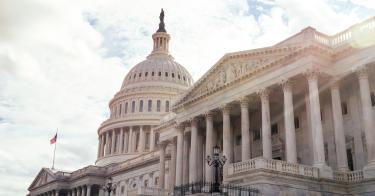When President Trump signed the 2,232-page, $1.3 trillion omnibus spending bill last month, he was emphatic that it wouldn’t happen again.
Referring to the fact that no one could possibly have had time to read this mammoth piece of legislation, he said, “I will never sign another bill like this again.”
The implication, of course, was that nothing could be done about this latest round of massive overspending. Like it or lump it, there it is.
But that’s not exactly true. The president can, in fact, do something. He can pursue what’s known as a rescissions package.
Don’t let the wonky word cause your eyes to glaze over. “Rescission” simply means to revoke, cancel or repeal a law, or at least part of it. A rescissions package would basically rescind part of the spending that Congress recently passed.
But wait, you may say. The Constitution gives the “power of the purse” to Congress, not the president. What’s he got to do with initiating such an action?
Article I does stipulate that “no money shall be drawn from the Treasury but in consequence of appropriations made by law.” But Article II says the president “shall take care that the laws be faithfully executed.”
So Congress provides the funding, but the president is responsible for how the appropriations are executed.
That doesn’t mean he can decide how it’s spent unilaterally, or do so in a vacuum. Congress still has an important role to play.
Presidents from Thomas Jefferson on down had been submitting rescissions for years with relatively little trouble. But things came to a head during Richard Nixon’s presidency. He broke with previous presidents by impounding larger amounts (nearly $15 billion in 1973, out of a total budget of $245 billion) and ignoring Congress’s intent that the funds be spent.
The legislative branch responded to this challenge with the Congressional Budget and Impoundment Control Act of 1974. “Title X of the act limited the power of the president to withhold funding and put into place a formal procedure for when the president tried to do so,” writes budget expert Justin Bogie.
This didn’t mean the end of the road for rescissions. From 1974 to 2000, presidents proposed about 1,200 rescissions, totaling more than $77 billion. Congress approved 461 of them, which resulted in a savings of $25 billion.
But there have been no requests for rescissions since 2000. President Clinton was the last one to even try. That needs to change.
Yes, the amounts we’re talking about aren’t exactly huge. The most significant budgetary savings occurred under President Reagan: 1.3 percent. And that, of course, refers to cuts from discretionary spending — not the increasingly massive amount considered mandatory.
So no, as Mr. Bogie points out, “rescissions will not fix the country’s current fiscal mess. Rescissions are not a significant deficit-reduction tool, nor are they meant to be.”
However, they are still an important first step toward what should be a top goal for Washington policymakers: Getting their out-of-control spending problem under control.
Just because the amount we can save through rescissions is a relatively small one doesn’t mean we shouldn’t try. If nothing else, it sends a message that cuts need to be made. The least Congress could do is provide a package of $13 billion in rescissions, which is just 1 percent of the total omnibus.
We can’t just throw up our hands because the task before us is so huge. Yes, the federal debt is higher than it’s been at any time in the post-World War II era. The need to get spending under control is more important than ever. But if we can’t claw back even a small amount through rescissions, does that mean we’re just supposed to give up entirely?
You have to start somewhere. And a rescissions package is the place to do it.
This piece originally appeared in The Washington Times




